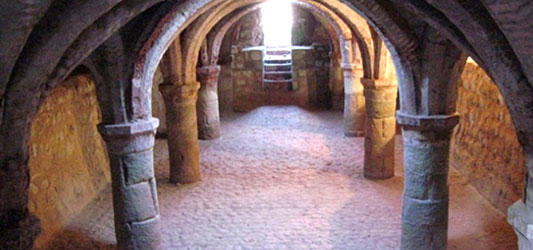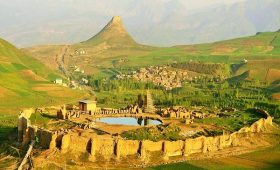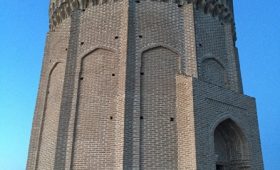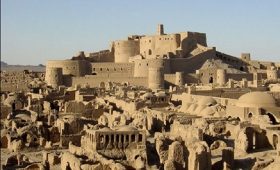Portuguese Castle, In the port of Qeshm, Kong, Oman, Ras Al Khaimah, Hormuz Island and other areas of the Persian Gulf, thick walls can be seen, which are actually the most important remnants of the days of exploitation of the coasts and islands of the Persian Gulf. After occupying parts of the Persian Gulf islands, the Portuguese colonists built forts, some of which are still standing today. Among this complex of castles in the south of Iran, the Portuguese castles in Hormuz, Qeshm and Chabahar are more famous than others.
Portuguese relics have become tourist attractions that attract thousands of tourists every year. One of the most famous tourist attractions in Qeshm, whose name is familiar to every tourist of the island.
Qeshm Portuguese Castle was built in Qeshm Island in 1507 by the order of Alfonso Alberkerque, a Portuguese sailor. After the 5.9 Richter earthquake in spring 1379, the exploration of the inner part of the eastern wall of the castle failed due to extensive destruction. In the excavations of the Portuguese castle, a number of porcelain belonging to China, Venetian glass and war cannons were found.
The main use of the castle was a large warehouse or a place to store ammunition and weapons, and in case of emergency it was responsible for supporting fortresses such as Hormuz, Qeshm and Lark fortresses. The castle’s drinking water was supplied by rainwater and well water, which was kept by an underground channel in the castle’s ponds and ponds.
Qeshm Portuguese Castle is considered one of the sights of Hormozgan province and is located on the north side of Qeshm Island, Geopark Boulevard, close to the beach.
From the period of Portuguese colonialism, only a few historic castles remain on some ports and southern islands of Iran. Strong forts that were built to protect the Portuguese military against the possible rebellion of the Iranian harbor dwellers. The castles ensured the presence of these colonists in the south of Iran and their control over the maritime trade of this region for more than 110 years. This period lasted from 1514 to 1623 AD.
Alphonso Alberquerque captured the islands at the mouth of the Persian Gulf and thereby dominated the maritime trade route between India and Europe. Portuguese dominance over this important waterway lasted 110 years. For about a century, the Portuguese built forts and fortifications, including Hormuz, Qeshm and Lark forts. Finally, in 1623 AD, one of the Safavid generals named Imam Qoli Khan captured this castle and other bases at the mouth of the Persian Gulf, and Iranians are still the most valuable waterway in the world.
This right-angled fortress has an area of more than two thousand square meters. The materials of the castle include limestone and plaster with local Saroj mortar, and the castle building has been strengthened several times over a hundred years. In the four corners of this fort, there are four towers and tall ramparts, on which cannons and catapults were deployed.
Qeshm Portuguese castle includes parts such as weapon warehouses, large reservoir, barracks, prison, church, command headquarters and hall.
Within 500 meters of the Portuguese castle, an old tunnel connected to the Portuguese castle of Qeshm was discovered. This tunnel was the escape route of the commanders and Portuguese military forces, as well as the storage place for their military ammunition. The underground tunnel of the Portuguese castle of Qeshm continues to the area of Saadi Square in Qeshm, about three kilometers long. It is said that the mentioned tunnel, based on some traditions, continues from the Portuguese castle in Qeshm city to Khorbes caves (15 km south of Qeshm city).
The Portuguese castle of Qeshm has relatively good lighting and you can visit it after sunset. However, daylight hours are recommended to see the details and view of the sea. Of course, due to the heat of the air, we recommend choosing cool hours. Therefore, the best time to visit Qeshm Portuguese Fort is early morning or evening.




